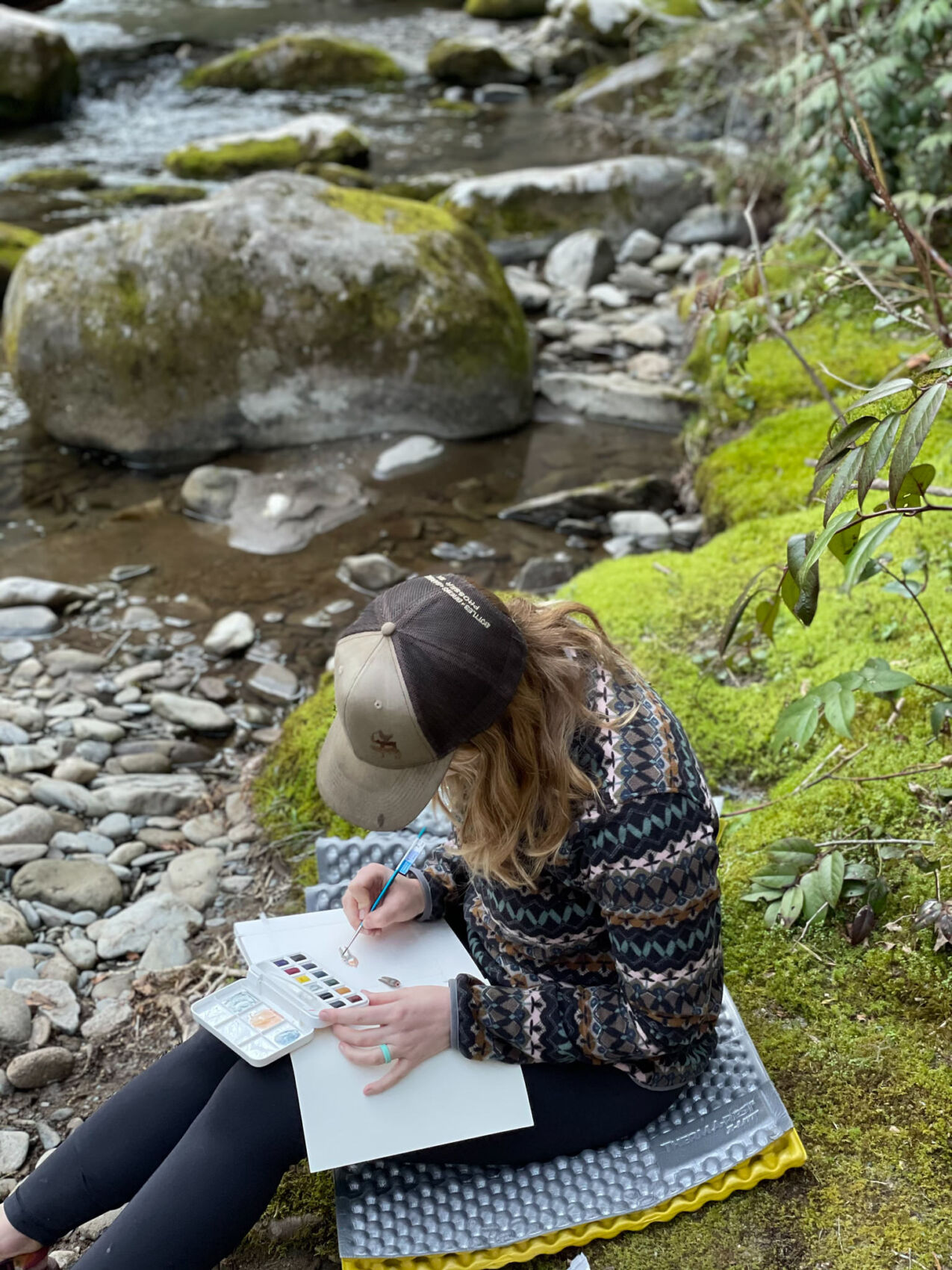What better way to celebrate a cross country move than by exploring the state you’re moving to from end to end on the Mountains-to-Sea Trail? And, what better way to document your journey than by watercoloring what you see and experience along the way?
Tessa and Wyatt recently moved from Oregon to North Carolina and decided that the best way to get to know their new home was to travel across it by foot and canoe. We followed their journey via Instagram and were blown away by the beautiful artwork Tessa was creating during their hike. We asked Tessa about their adventure, her creative process, their MST experience in general, and this is what she had to say:
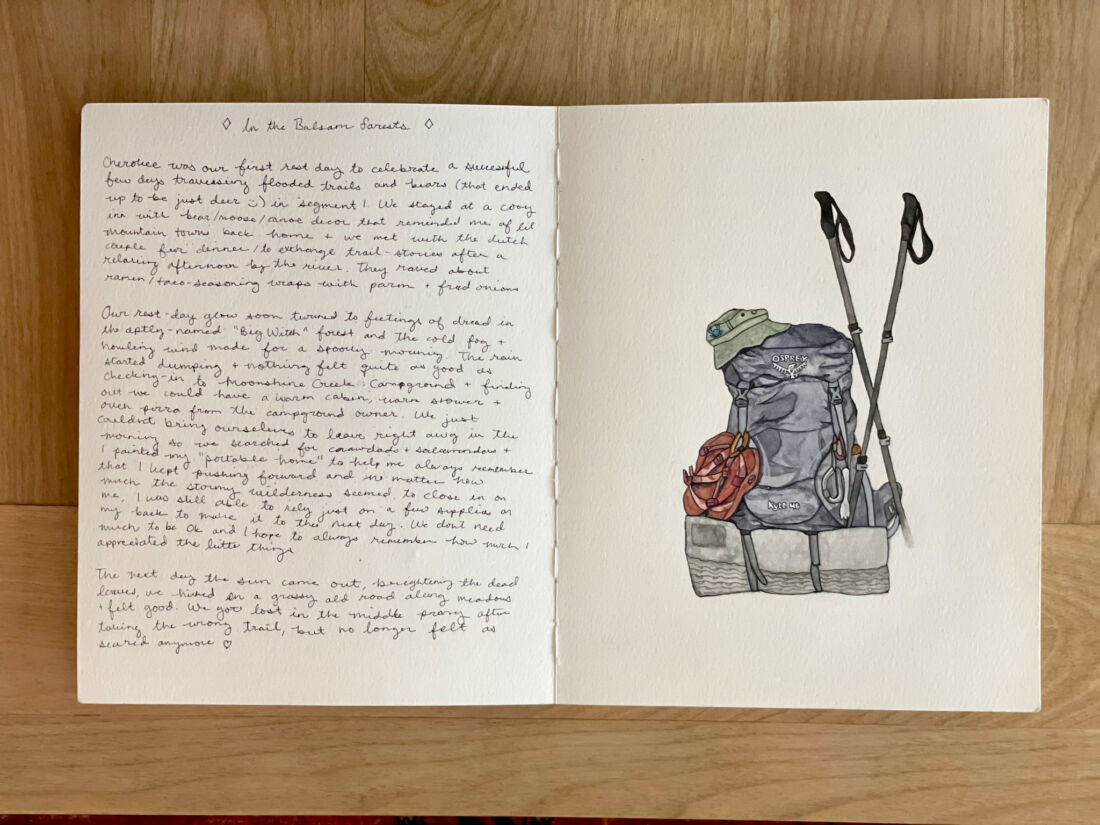
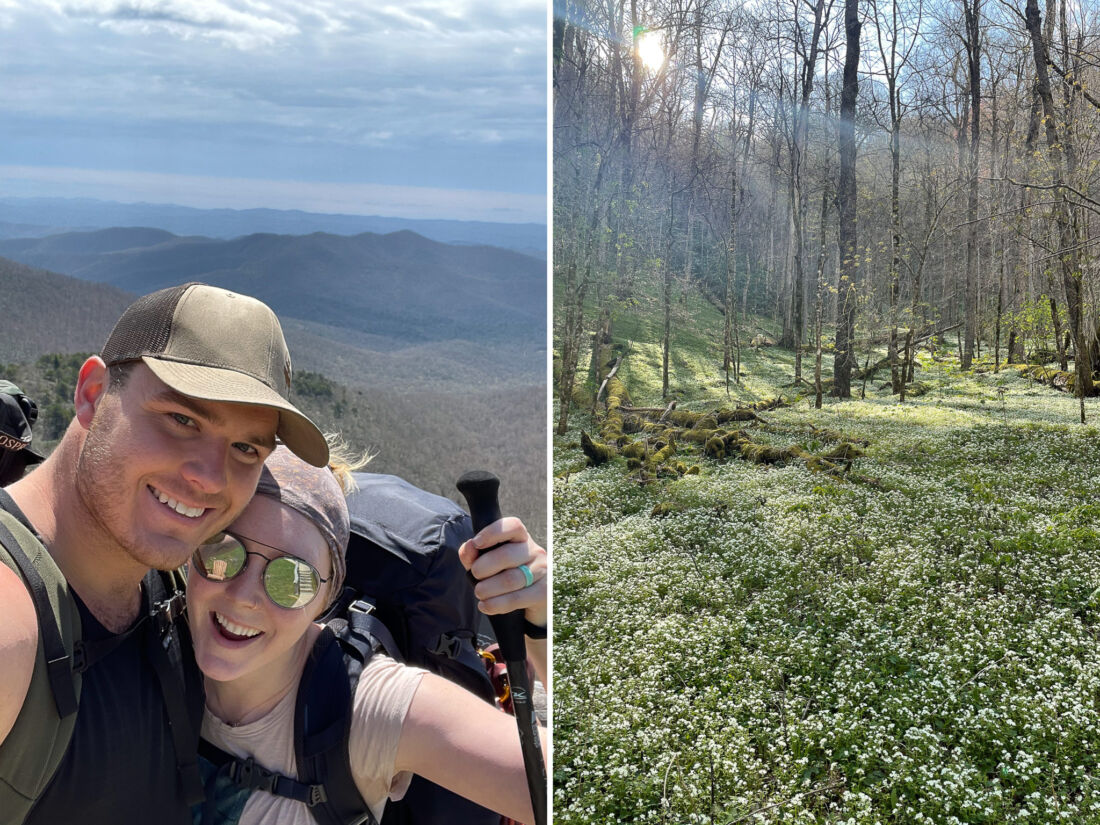
When my husband and I first found out that we would be moving east from the Pacific Northwest to North Carolina for work, I turned to him and asked “have you heard of this Mountains-to-Sea Trail?” He just grinned. We figured what better way to intimately discover the diverse landscapes and communities of our new home state than to walk across it? Immediately we began planning in the midst of moving boxes and fond farewells to our loved ones. We both felt strongly that (despite the obvious challenges accompanying backpacking over 800 miles) this experience not become simply a marathon mission to log miles, but instead to soak it all in –to study the local flora & fauna, to take frequent moments for rest and sheer pleasure, and to absorb all we could of this precious time together in the wilderness. So, as we looked at the intimidating piles of gear strewn across our kitchen floor on the night before we left for Clingmans Dome, we hesitantly decided that a collapsible fishing rod, foldable frying pan, and a miniature watercolor painting kit would be worth their weight in gold. Little did we know that night just how much those simple “luxury” items would come to mean to us on the trail.
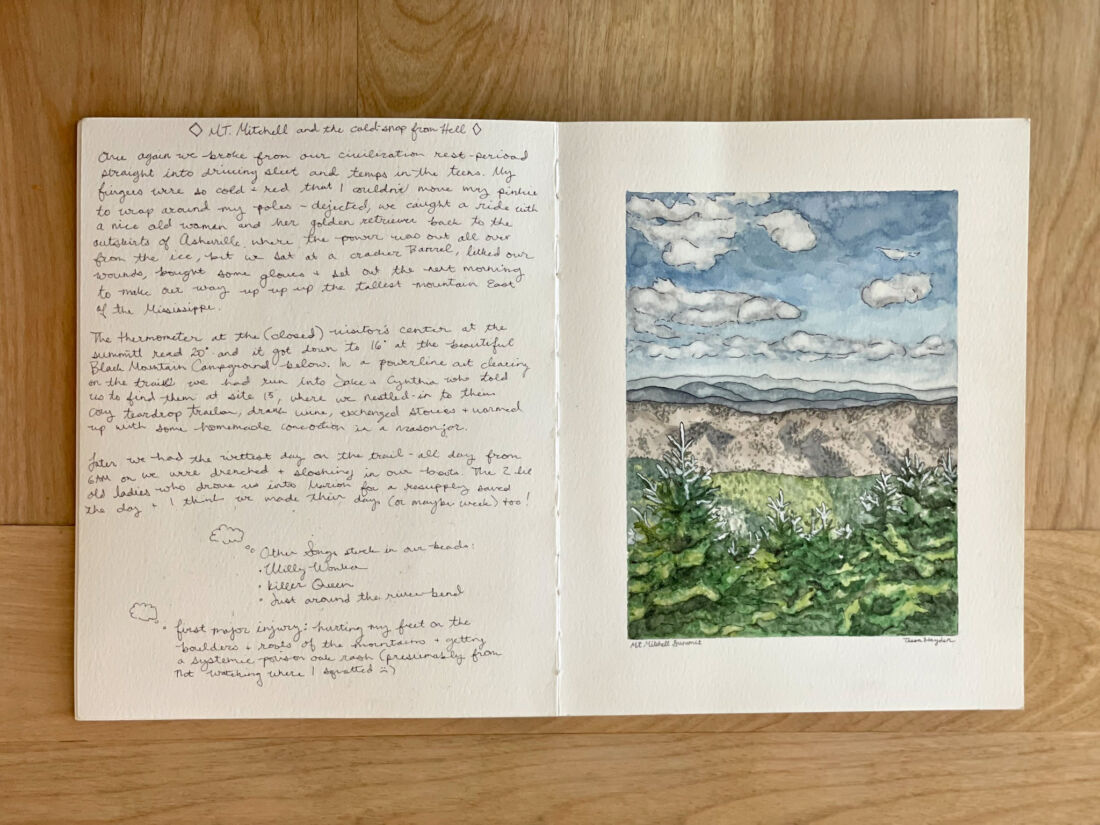
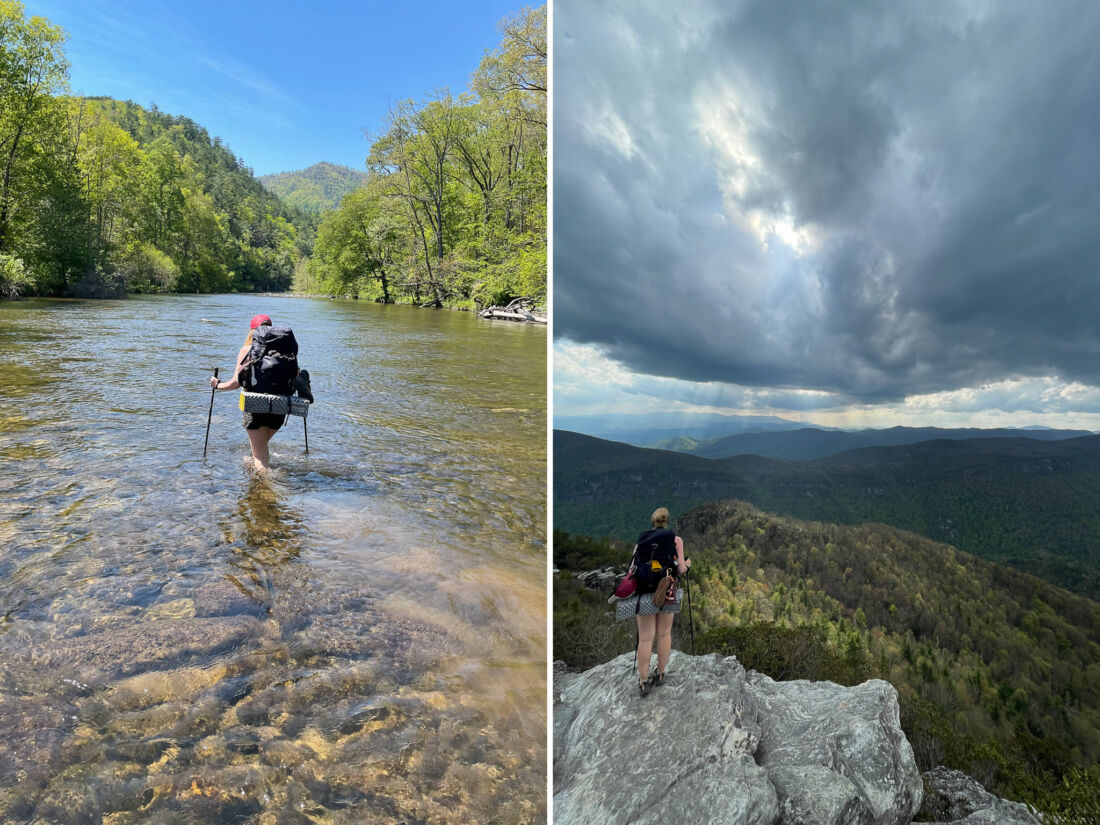
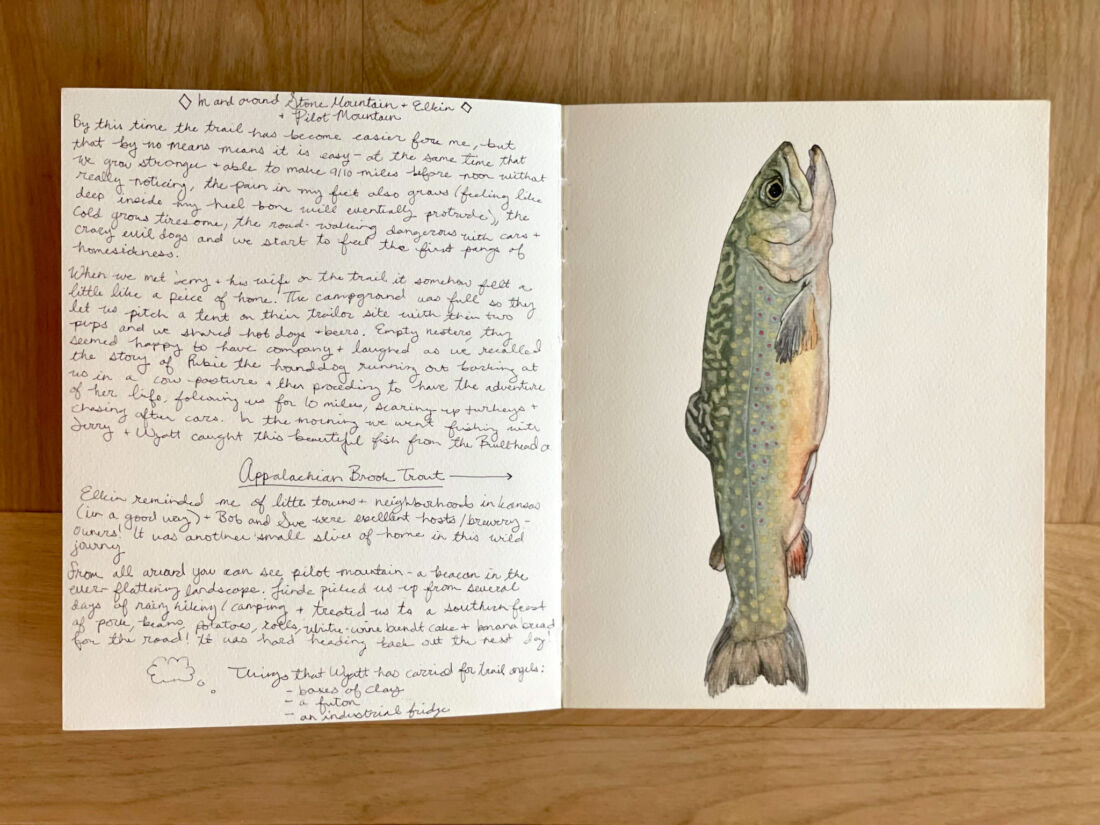
We had done a fair few weekend-backpacking trips back in the NW and abroad, but nothing remotely as immersive as this thru-hike. We underestimated both the difficulty of the terrain and the grandiose beauty of the ancient and rugged mountains, steamy cypress swamps, and crashing Atlantic waves of the east side. We often went days without seeing another human being, a feeling both exhilarating and unnerving. The landscape would quickly transition from lush rhododendron thickets and bubbling streams with slanting morning sunbeams filtering through tall deciduous trees, to haunting ridge tops with eerie mists and howling winds. One night I heard a loud rustling in the dead leaves, sat bolt upright in my sleeping bag, and blew on my little orange bear whistle as hard as I could, only to see a group of does prancing away in the pitch black, white tails up, even more terrified than I.
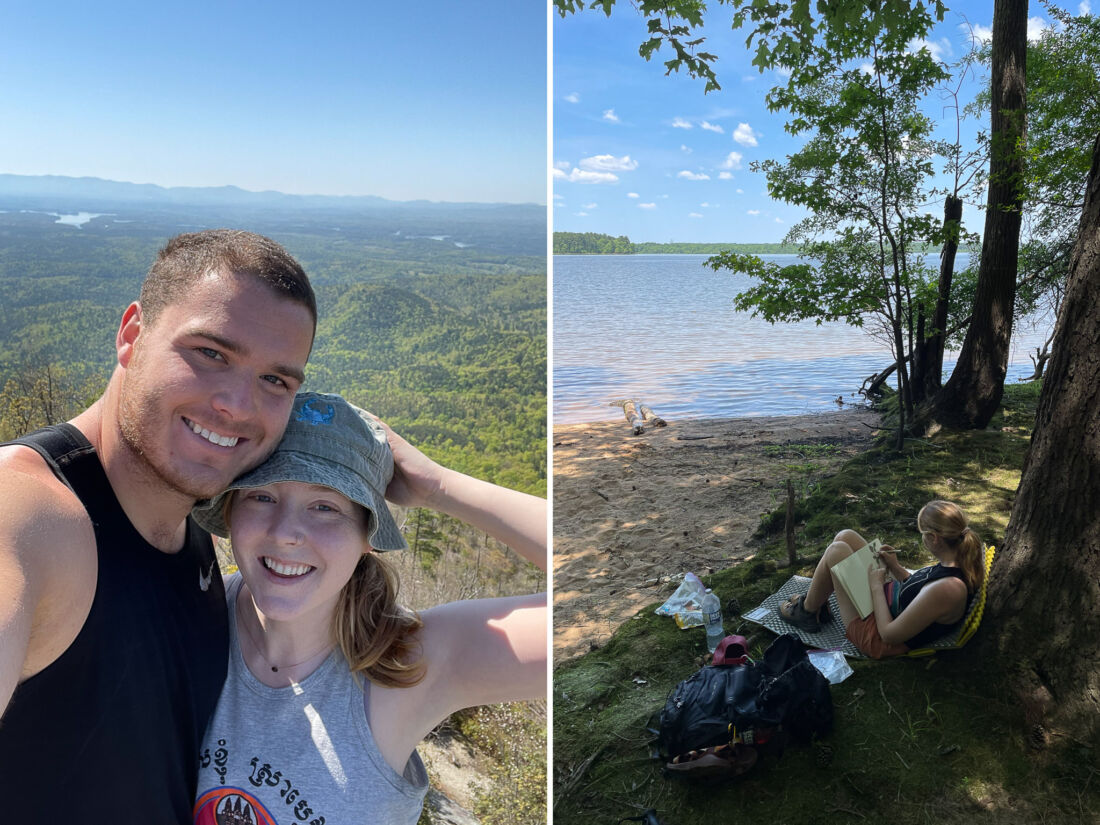
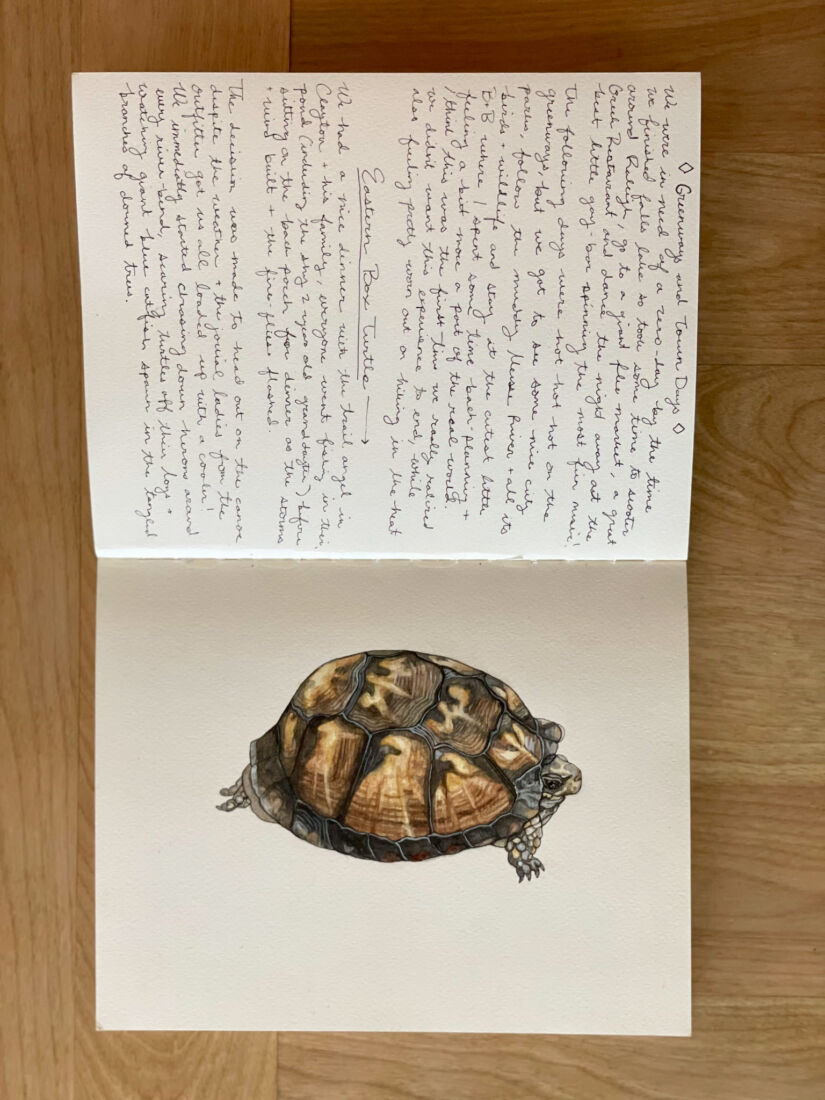
Determined to feel more comfortable settling in to the backcountry at nighttime, with all its little noises and creeping feelings of isolation, I turned to the one thing that always helped to dull my anxiety back in everyday life –painting. We developed a ritual of hiking as far as we wanted, setting camp, and then, while Wyatt cast a line in or read on his phone, I would roll out my sleeping mat on the leaves or moss, get my watercolors out, and start painting. This simple act not only distracted my senses from being overly on-edge in the evenings, but also helped me to focus in on the incredible wildlife I had had the privilege of encountering during our time in the woods. On multiple occasions I would find myself wearing down from the relentless elevation changes, weather, or creepy solitude and would stop to listen for bird calls, or watch a spider spin its web, or overturn a rock in a creek bed to find crayfish and colorful salamanders. These were some of the most peaceful moments I experienced on our journey, and I tried to encapsulate that feeling when I painted.
At Oregon State I studied Fisheries & Wildlife Biology, and now work in forest restoration. My brother is a professional artist, and, although I never trained in art, I grew up spending a good amount of time doodling, painting, watching Bob Ross, and being immersed in art. In my paintings I’m always striving to combine those worlds and create images of wildlife that show their soul and that, while they are wild and fierce and beautiful, they also are not so very different from ourselves in their daily battles and curiosity of life. Sometimes I would find remnants, such as a crayfish claw or a dead butterfly, that I would sketch and paint from still life, other times I would experience living creatures on the trail and snap a photo of them to use as reference material later at camp. I carried with me a watercolor-paper journal, a 12-pan Winsor & Newton watercolor palette in a case with a foldout-mixing pan, a collapsible cup from REI for paint water, 2 different sized brushes, a mechanical pencil, a pen, and an eraser. I triple-wrapped all these supplies in plastic bags, which paid off tremendously when we were caught in torrential downpours and canoed down the Neuse River. I would always leave the opposite page of the journal blank to add in little notes about the species, observations, and/or musings about experiences we had on the trail –who we met, what we saw, what annoying songs were stuck in our head as we hiked.
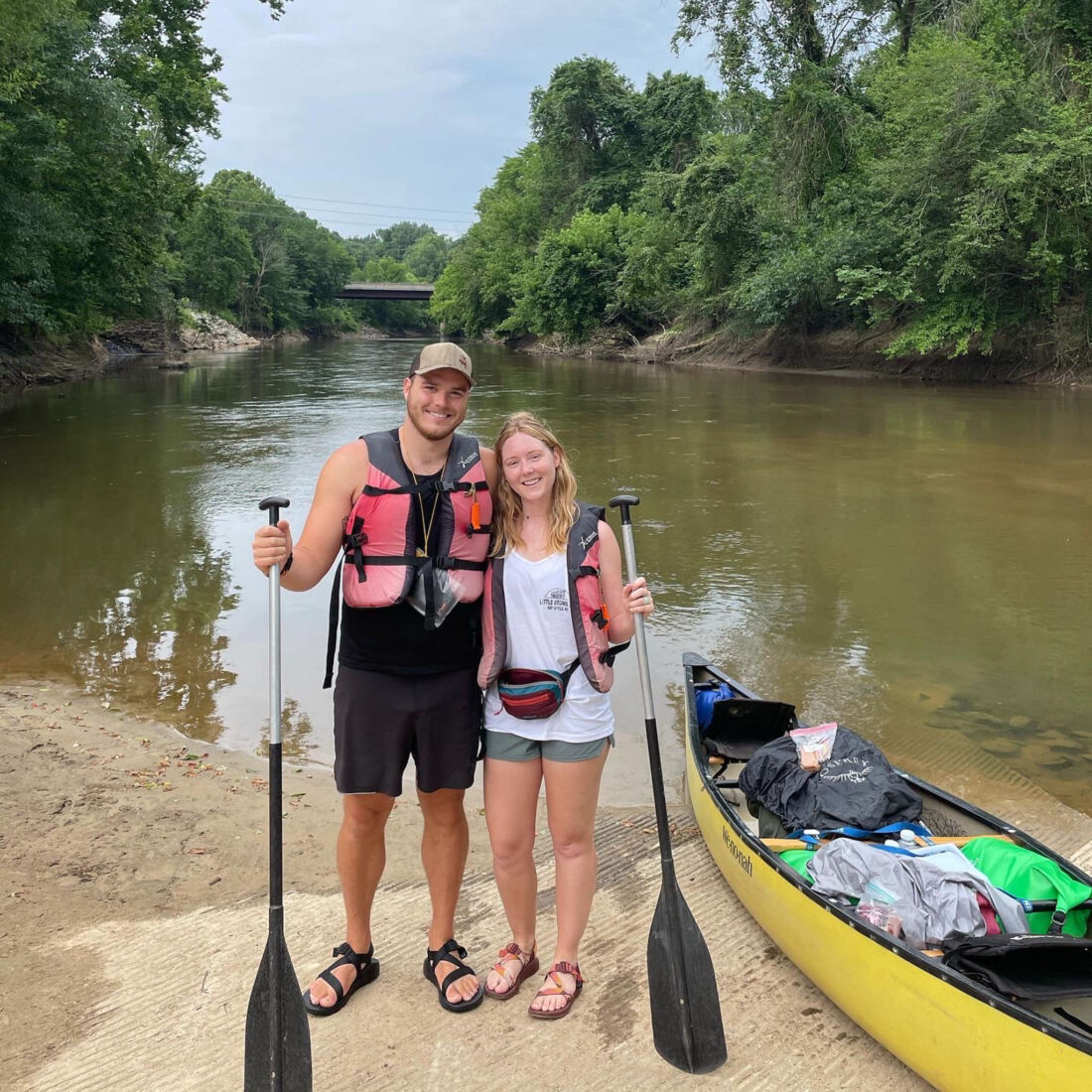
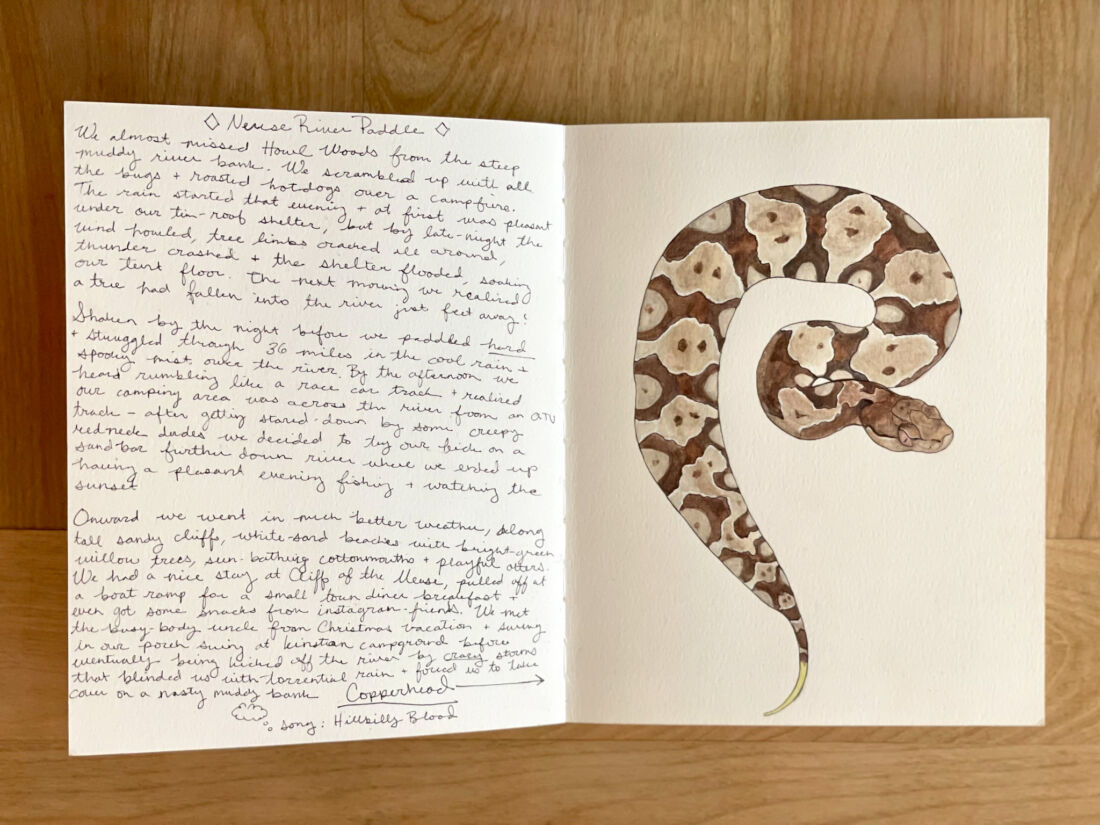
When we reached Jockey’s ridge in early-June we both felt at the same time as if we’d never left and as if we’d been on the trail for a lifetime and would never look at the world in quite the same light. The same feeling you get when you travel and immerse in somewhere/something very different, outside your comfort zone, the most empowering and humbling feeling in the world. Having to carry everything on our backs meant that we finished the trip with very few “souvenirs” –a bear claw I found in the Pisgah, an Angry Troll tee-shirt and Para cord bracelet gifted to us by a couple of the sweetest trail angels we met along the way, and, most prized of all, the watercolor journal that housed so many experiences, emotions, and unique North Carolina natural treasures.

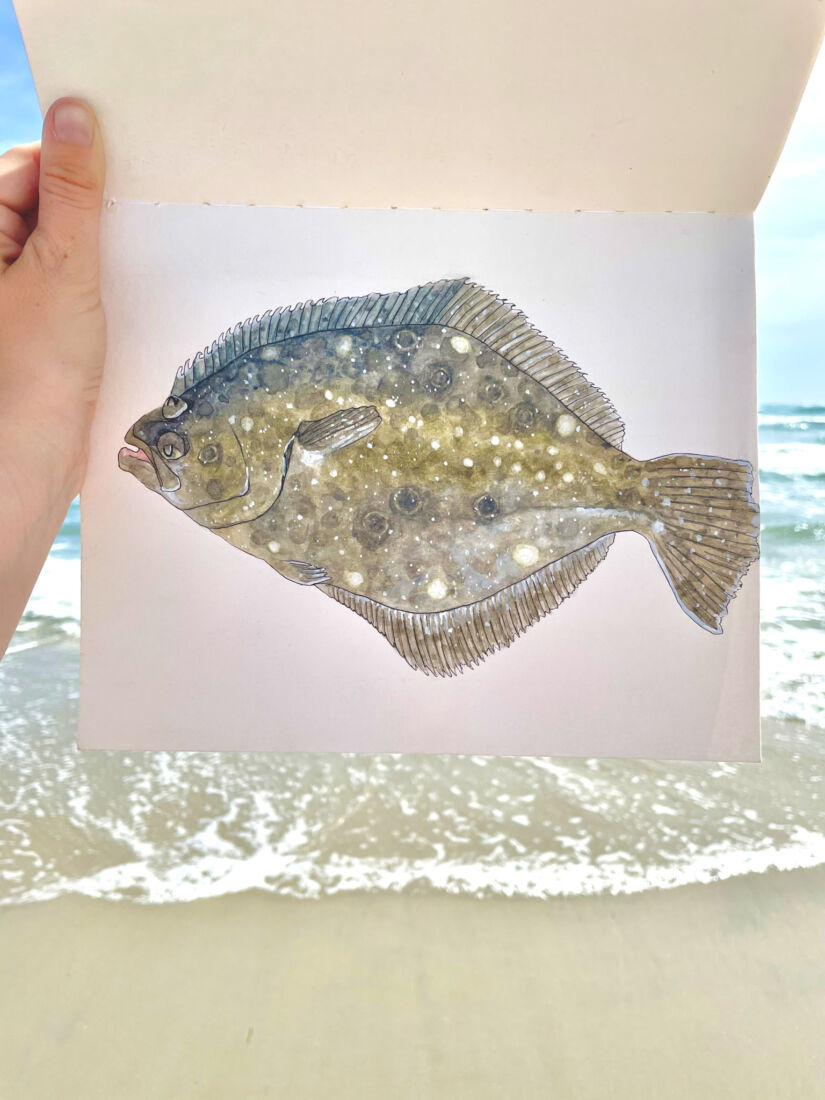
We are so fortunate to have been able to experience this trail to the fullest of our abilities and want to thank all who have worked tirelessly to make the dream of the MST a reality, to upkeep the rugged trails, and to offer their homes and hearts to weary travelers. From the bottom of our hearts, thank you.
-Tessa Hayden
Thank you, Tessa, for sharing about your journey! You can follow Tessa on Instagram here: @tessa.nature_art
What is your favorite way to document your adventures?


